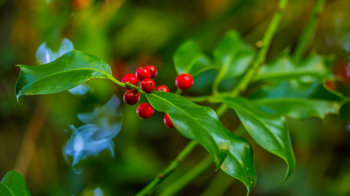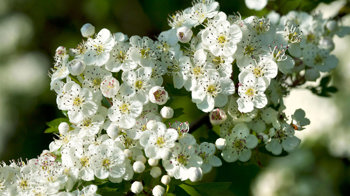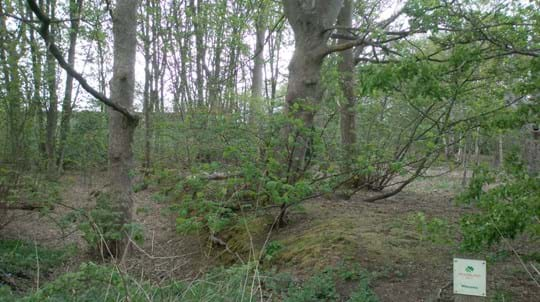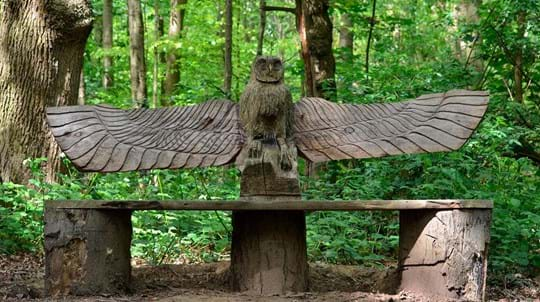
Haddocks Wood
Runcorn

Woodland Trust wood
9.46 ha (23.38 acres)
SJ543835
Explorer 275
OS Landranger 108
Explore the mix of broadleaved trees in this compact, urban woodland. A remnant of a much larger wooded area, Haddocks Wood is a haven for local wildlife, particularly birds.
Visit in spring for colourful wild flowers and displays of bluebells and any time of year to escape the bustle of town life.
Features
- Parking nearby
- Public access
- Broadleaved woodland
How to get to Haddocks Wood
The 9.5-hectare (23.4-acre) site lies around 4.8km (3 miles) to the east of Runcorn in the Astmoor/Manor Park area, close to Norton Priory. The woodland is made up of several compartments around Haddocks Wood sports fields and Halton Borough Council-owned allotments, and lies adjacent to Haddocks Wood Green Waste Recycling Facility and Astmoor Industrial Estate.
From central Runcorn, head east on the A533 (Bridgewater Expressway), and continue on to the A558 (Daresbury Expressway). Take the exit towards Astmoor/Castlefields, turning left onto Astmoor Road, and then right for Warrington Road, towards Haddocks Wood playing fields.
The nearest train stations are Runcorn East, 4.8km (3 miles) from the wood and Runcorn, 4.8km (3 miles) away.
Visit National Rail for more information.
Buses run from Runcorn to the Astmoor Industrial area which is near to the wood. The closest bus stop is on the bus lane that leads onto Astmoor Road, a short walk north from the Astmoor Road entrance.
Visit Traveline for more information.
Facilities and access
To enter the wood, walk down the road leading to Haddocks Wood playing fields and go through the kissing gate on your right. A 1.6km (1 mile) walking route can be picked up at Norton Priory, Haddocks Wood playing fields car park or the busway at the junction of Astmoor Road/Warrington Road. The site is relatively flat and the entrance adjacent to the playing field is accessible by robust pushchairs and wheelchairs, although paths are unsurfaced and may become muddy in wet weather.
The block of woodland heading towards Astmoor contains a small flight of steps which are not suitable for pushchairs. This entrance leads out onto Astmoor Road and care should be taken as it is heavily used by fast-flowing traffic.
Parking is available in a number of lay-bys next to the woodland and opposite the adjacent playing fields on a tarmac track that can be accessed either from Warrington Road or Tudor Road.
There are no public toilets in the immediate vicinity, the closest being in the Runcorn Shopping Centre.
Wildlife and habitats
Animals
Haddocks Wood forms an important stepping stone for wildlife due to its location near the Manchester Ship Canal and Mersey Estuary, with the pond in the marl pit attracting plenty of wetland birds.
Trees, plants and fungi
Haddocks Wood was once part of the Brooke family estate and the woodland was planted to help shelter the main part of it.
There are three blocks of mixed broadleaved woodland consisting of oak, lime, sycamore, beech, birch, cherry, alder, and willow. The understorey contains rowan, willow, holly, and hawthorn. Ground flora includes bluebell and lesser celandine.
Habitats
Urban woodland is a vital habitat for wildlife and for people.
The site transferred to public ownership in 1921. We acquired the woodland in 1995.
About Haddocks Wood
Norton Priory
Haddocks Wood was once part of the Brooke family estate, centred on the nearby Norton Priory. The abbey was closed in 1536 as part of the dissolution of the monasteries. The Brooke family built a house in the contemporary Tudor style on the site, incorporating part of the abbey. This was replaced in 1750 by a Georgian house.
The woodland was planted to help shelter the main part of the estate and was used for hunting. The pond was formed from a ‘marl pit’ from which marl, a mix of clay and carbonate of lime, was excavated for fertiliser.
Norton Priory remained in the Brooke family for almost 400 years. The family left the house in 1921 as a result of the rising cost of maintenance and the levels of pollution from nearby Runcorn and Widnes, and it was partially demolished in 1928.



































